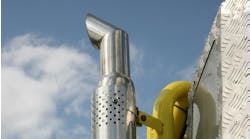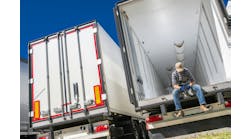Being an automotive technician means having to deal with flying sparks, heavy tools, and high heat. This is especially true if you are doing any kind of welding. After all, welding is a process that entails the use of an electrical appliance that generates a lot of heat.
This is not to say that welding is unsafe, on the contrary when done right welding is a very safe procedure. So how should welding be done? For starters, you should observe safety protocols that relate to welding.
Here are five safety tips to ensure your safety while welding.
1. Wear the right clothing
As mentioned above flying sparks is one of the things you will have to contend with when using an aluminum welding machine or any other type of welder. It is impossible to tell where these sparks will land, meaning some could very well land on your skin.
And since you do not want superhot sparks landing on any part of your exposed skin, it is important to wear clothing that covers your body. Clothes or overalls specially designed for welding are highly recommended.
You can also opt for clothing made from denim or any other thick and heat-resistant material. It is also not advisable to wear cuffed pants. The latter may catch sparks landing you in trouble.
Additionally, your feet are as vulnerable to hot flying sparks as the rest of your body. Therefore, it is important to wear the right pair of shoes. The best shoes to wear when welding are high-top leather shoes or boots.
Your pants should go over the shoes. Tennis or cloth shoes are a no in any welding environment. Ignore this rule and you may start feeling a burning sensation in your feet as you weld.
2. Wear a shaded helmet
You may have your welding overalls on, but if your eyes are not well protected you are still in harm's way. For starters, a stray spark to the eye is nothing pleasant. But more importantly, the light that comes from an active welder is enough to cause permanent blindness.
To prevent this, it is important to wear a shaded helmet. This will ensure your eyes are well protected, while still giving you a clear picture of where you are welding. Auto-darkening helmets are recommended for this purpose.
Auto-darkening darken automatically as you begin to weld, making them the safer and preferred helmet option over traditional helmets, which require you to snap your head to drop the hood. Auto-darkening helmets are also lighter, which means less strain on your neck.
Furthermore, all auto-darkening helmets must meet ANSI standards. The most recent ANSI standard, standard Z87.1-2003 recommends technicians wear a helmet with an auto-darkening speed of 1/10,000 to 1/20,000 sec.
Avoid auto-darkening helmets with speeds of 1/2,000 to 1/3,600 sec. The reason being that all auto-darkening helmets are affected by cold weather. Thus, during winter, they may take a longer time to darken.
3. A clean workspace is best
Welding machines feature cords, clamps, and other electrical components. These components can become caught on stray items. Therefore, it is important to keep your work area tidy and organized.
A messy work area with all manner of appliances strewn across the place can cause you to trip causing serious injury. Keeping everything organized means you will know where everything is, making it easy to access the tools you need quickly.
It is important to inspect your work area to ensure it's clean and tidy. Something like a puddle of water can cause serious harm and damage if left in the open.
4. Ensure proper ventilation
Apart from flying sparks, welding also produces fumes and smoke especially when welding is being done indoors. And since automotive repair work mainly happens indoors, these fumes can be a health hazard.
You can use an exhaust hood to get rid of these fumes. In some instances, you may require a respirator. However, this is only for a select number of welding tools. It is important to confirm with the manufacturer whether their welding tools require a respirator or not.
It is also important to ensure the room you are welding in is well ventilated in order to have proper circulation of breathable air.
5. Invest in a boom-mounted wire feeder
A boom feeder places the wire feed controls at the base of a 12’ or 16’ boom. The drive assembly is then placed at the end of the boom. So why should you invest in such a mechanism for your garage?
The boom is able to rotate 360 degrees and move 60 degrees up and down. This creates a flexible work environment. With it you can get a 24’ or 32’ diameter work area, which is quite sufficient.
One of the main benefits of using a boom is that it reduces accidents related to work area cable clutter. Also, it eliminates the need for lifting the wire feeders, which may be quite hefty.
Conclusion
Every automotive garage or repair shop is different and may have safety protocols that are unique to them, but these five tips are general, and it is important to consider any safety protocol that may be unique to your environment.
Adhering to all these safety precautions will ensure a safer and more productive work environment.
Information provided by Tool FAQs



